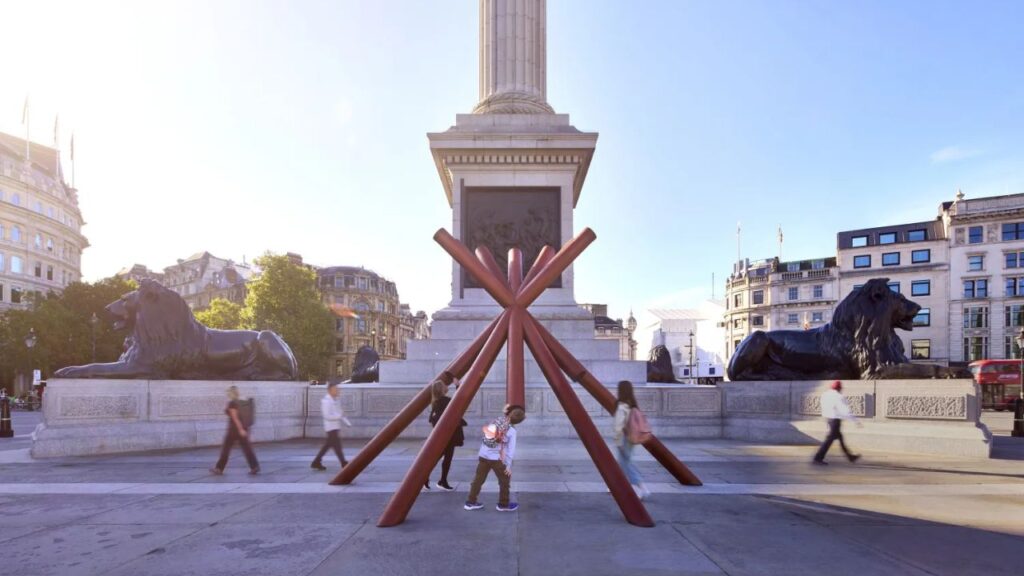There’s a continuous chatter within design circles over whether the London Design Festival (LDF) still holds the claim to be included among the “fab four” of global design events, or not. Salone del Mobile and Maison & Objet are long-established cult favorites, while NYCxDesign Week, after its recent surge in popularity, has cemented its place on the podium. So where does that leave LDF? Is London’s premium design event still worth the hype, or has its influence been foreshadowed by Stockholm Furniture & Light Fair or Copenhagen’s 3daysofdesign, two design festivals that are slowly moving into the top tier?
“If you’ve ever experienced LDF in all its scale and sophistication, you’d know that, unlike 3daysofdesign or Stockholm Furniture Fair, London Design Festival isn’t just a single-location trade show. It’s a city-wide takeover that transforms London into a celebration of design through installations, exhibitions, and talks across multiple districts,” LDF Founder Ben Evans tells me.
Evans’ point is hard to dispute. Each September, London becomes a living, breathing gallery. Unlike Salone del Mobile or any other design fair within Europe, LDF does not take place in a single venue; it is scattered across the entire city. “A diverse array of exhibitions and installations takes over the city’s museums, shops, streets, and studios,” Ben states, recalling how the Festival welcomed a record-breaking 600,000 individual visitors in 2019. “Even those from Milan, Copenhagen, and Stockholm come without hesitation to attend the biggest design show,” he claims.
If numbers are to be taken into consideration, the festival continues to attract more visitors than Salone del Mobile and Maison & Objet combined. This includes millions of visitors from around the world, including exhibitors, media professionals, and, most importantly, design enthusiasts. But the question has never been about the number, but about intent. What started as a celebration of design has turned into a citywide Mess? To get a better understanding of the situation, we spoke with exhibitors who attended this year’s event.
For Chung Kun Wang, a first-time exhibitor from Taiwan, the answer is layered. He brought Hornscape Playground to Bankside Design District in 2025 and described the experience as “an inspiring platform where diverse voices met.” LDF’s openness to experimentation, he says, “is something other festivals could learn from.” Yet, for all its strengths, the festival’s vastness proved a challenge. “The main problem we encountered was logistics and resources for overseas participants, something that often overshadowed the creative exchange that makes the festival truly special,” Chung says.
That tension between creative potential and practical barriers was shared by other participants as well. Curator Francesco Feliziani, who presented the Unbroken exhibition, praised the way LDF invites designers to interact with the city itself. “The festival’s strength lies in how it opens up historic and hidden spaces for reinterpretation. That relationship between design and place is something other festivals could adopt more of.” But he also acknowledged the trade-off: “Its downside is scale, which can be overwhelming and blur focus,” he says. “The real challenge is cohesion. The spread is so vast, it’s hard for visitors to fully grasp the narrative and experience it seamlessly,” Francesco points.
Even for local designers, that sprawl can be confusing. Joe Ellwood, founder of Six Dots Designs, who showcased a sculptural table lamp this year, admired the energy brought by a new generation of participants. “The number of events and exhibitions is always exciting,” he says. “It’s great to see so many new practices emerge.” Still, he admits, the festival can sometimes feel closed off to those outside the design bubble. “It often feels like it’s only for people already in the design world. There’s limited cultural crossover, and that could limit the Festival’s long-term relevance.”
In addition to being a citywide mess, another criticism LDF has to bear is from an accessibility standpoint. Christopher Raeburn of Re Factory, who brought his exhibition Waste Not: Fallout to Future to LDF to highlight sustainable design through post-consumer waste, described the Festival as a space that “excels at spotlighting boundary-pushing, sustainable creativity,” but warned that it risks becoming bloated. “Reducing scattered, less-curated displays could sharpen its impact,” he says. More pressingly, he adds, “a core challenge remains accessibility. Not everyone can fully experience the Festival’s ambition, whether due to cost, location, or lack of clear entry points.”
Despite these challenges, most participants seem to agree that the London Design Festival offers something rare. It provides a chance for design to be both seen and felt, not just in galleries, but in the city itself. It creates moments of wonder, provokes important conversations, and offers an evolving platform for designers at all stages. So, is London Design Festival worth the hype? Yes, but only if it continues to evolve with intention, not just scale.

